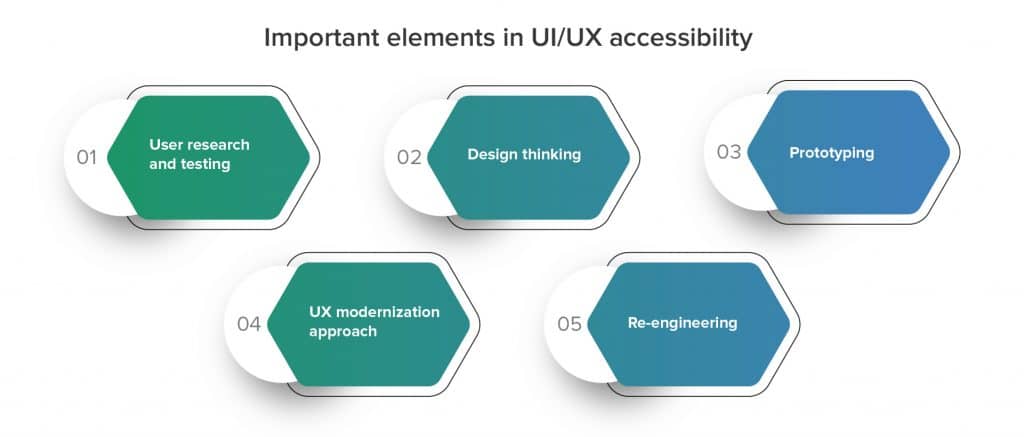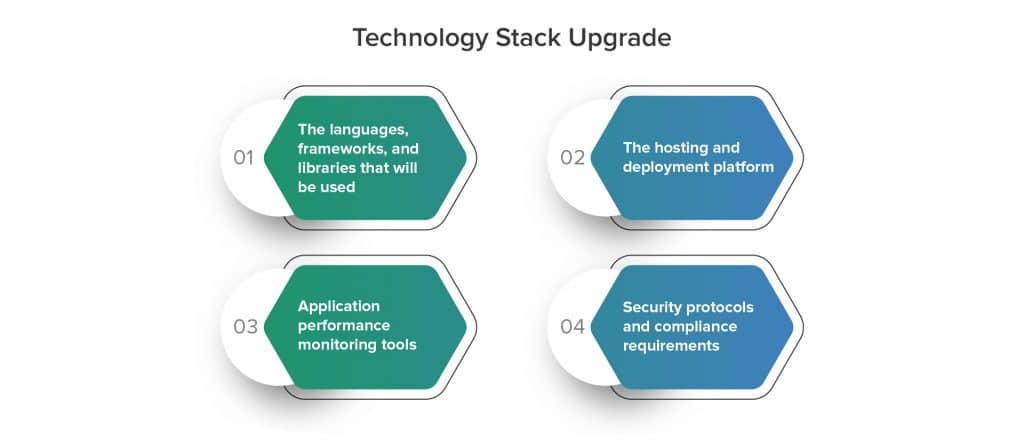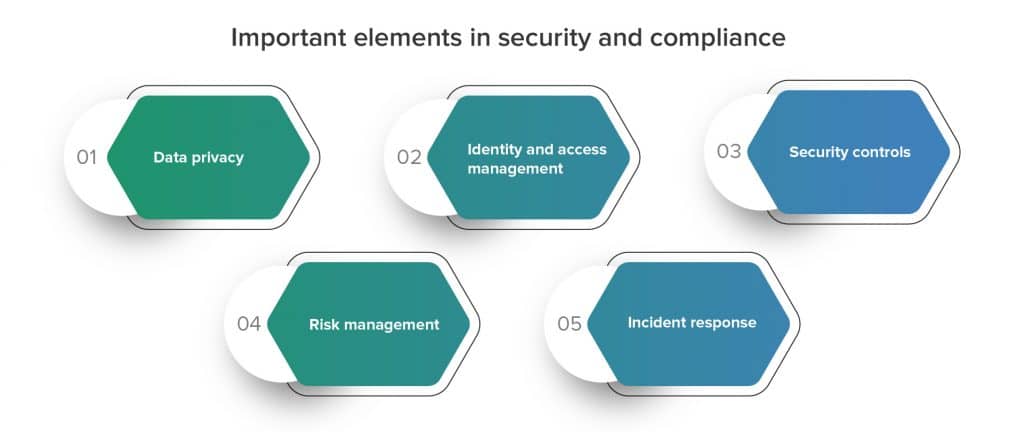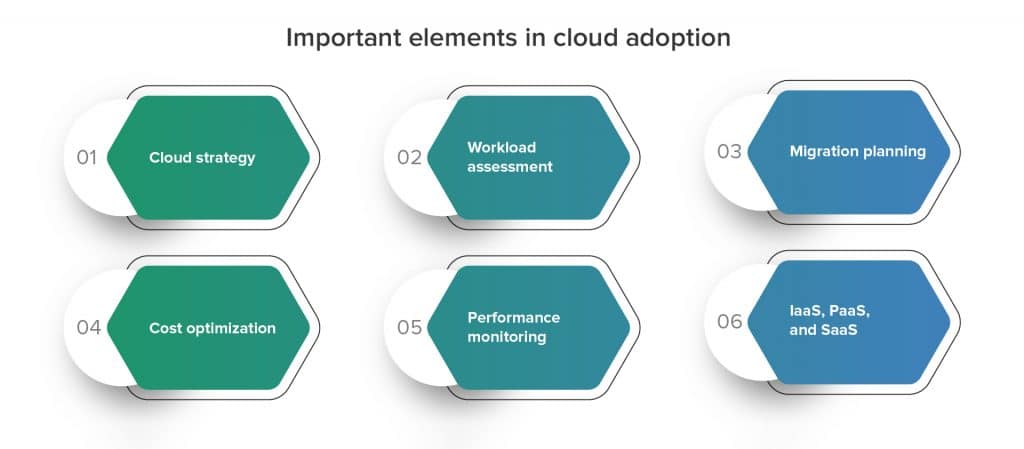In a post-Covid era, experience-centricity is rightly living at the helm of business outcomes levers, with CXOs across industries unanimously accepting the fact that their customers are their best brand ambassadors. Businesses have realized that to satiate these experience-hungry customers, they need to re-look at archaic tech infrastructures and modernize them for the digital-first world.
With this in mind, the application modernization market is finding itself at an inflection point where it is forecasted to grow to a substantial market value of USD 24.8 billion by 2025. Legacy application migration and re-platforming are at the forefront of this journey as they enable enterprises to move away from costly and unsupported mainframe systems, old tech stacks, cumbersome user experience and many more while also benefiting from increased operational efficiencies.
Understanding the key elements that envisage Product Modernization
Embarking on a journey of product modernization requires organizations to identify and assess the key elements that shape their modernization strategy. Let us take a look at the most important ones:
1. Analytics Enablement
Product modernization demands an extended capability to handle larger data sets and sophisticated analytics. The objective is to identify patterns, trends, and correlations previously hidden in the data. This involves using probabilistic models that thrive on copious amounts of historical data.
For modernized products, this translates to the ability to run analytics as events occur in real time. Key benefits of analytics enablement include:
- Improved customer experience and engagement
- Analytics on a wide variety of data
2. Automation Gaps
Production cycles of today are measured in weeks instead of months or years. To achieve such agility, enterprises need to invest in automation at various levels of the application development lifecycle, such as swift production changes, the ability to roll back, and easy monitoring. With increasing moving parts, automation becomes key to maintaining control and reducing operational risk.
Transforming the product architecture to include Continuous Integration/Continuous Delivery (CI/CD) pipelines is one of the most critical steps in automating product development. With CI/CD, enterprises can automatically build, test, and deploy code changes, reducing the time to market.

3. UI/UX Accessibility
Redesigning a legacy app is like giving it a facelift that constantly challenges the status quo. Even if the product is capable enough to address real-world problems, outdated and complex UI/UX can be a deterrent in achieving desired adoption rates. Additionally, end-users might be habitually accustomed to a certain navigational and functional flow, making them resistant to substantial changes.
Rebuilding a product’s UI and UX is an all-encompassing exercise that considers the target audience, platform specificity, use cases, and more. Learning curves must be considerably shortened and communication protocols updated to ensure a seamless user experience.

4. Architecture Transformation
Application modernization is more than just improving the user experience or making an application faster. It’s also about rethinking how the product is built and operated from the ground up. This includes making it more scalable, resilient, and secure while handling the influx of data and the measurable intelligence it produces.
With that in mind, there are two fundamental approaches to architecture transformation. They may be done ‘Incrementally’ or ‘Radically’.
In the Radical approach, transformation is addressed all at once, often with parallel teams working on re-architecting different parts of the application. The end goal is to move away from the legacy system as soon as possible.
The Incremental approach is more piecemeal, starting with smaller projects with a tangible end goal. These projects are typically completed one at a time and then integrated into the larger application architecture.
The type of transformation will be dictated by the existing application architecture, business needs, and the risks associated with each approach.
Some of benefits of architecture transfomation include making the platform faster & scalable, increasing the performance of software products, reduces costs and avoids code duplicity, helps manage coplexity and many more
5. Technology Stack Upgrade
Typically one of the first steps of the modernization journey, your technology stack becomes the foundation on which the new application will be built. It’s essential to consider the following when upgrading your technology stack:

Even with everything in place, migrating an application to a new platform comes with its own set of risks and challenges. To avoid potential issues, it’s crucial to have a comprehensive plan that includes a complete audit of the application, its dependencies, and the underlying infrastructure.
With the rise of data privacy concerns and stringent regulations, enterprises must be vigilant while collecting, storing, and processing sensitive information. This is especially true when it comes to upgrading legacy applications that might not have the necessary security controls in place. Some of key benefits of technology stack upgrades include improved capablities of stack, boost security, and make application easier to develop overall
6. Security and Compliance
During application modernization, it’s essential to consider how data will be managed, secured, and compliant with the latest regulations. This includes everything from user authentication and authorization to data encryption, activity logging, to disaster recovery.

7. Cloud Adoption
Cloud adoption is no longer a nice-to-have for enterprises and products – it’s a necessity. Apart from the apparent benefits of scalability, flexibility, and cost-efficiency, the cloud makes it easier to adopt microservices and containers, which are essential for building modern applications.
As part of application modernization, enterprises need to assess their existing workloads and identify which can be migrated to the cloud. The assessment is used to scope and define a prioritized backlog for the migration. The review process also identifies orphaned applications that can readily be decommissioned, eliminating idle capacity when moving to the cloud, and providing immediate cost savings.

Conclusion
Product modernization can be daunting for enterprises, but it’s an essential step in the right direction. By taking a strategic and well-planned approach, enterprises can lay the foundation for long-term success. The key is to start small, focus on the most important elements, and build from there.
Once the initial groundwork is laid out, enterprises can gradually expand their reach and leverage the latest technologies to stay ahead of the curve. After all, the goal is not just to survive but thrive in the ever-changing landscape of business and technology.
